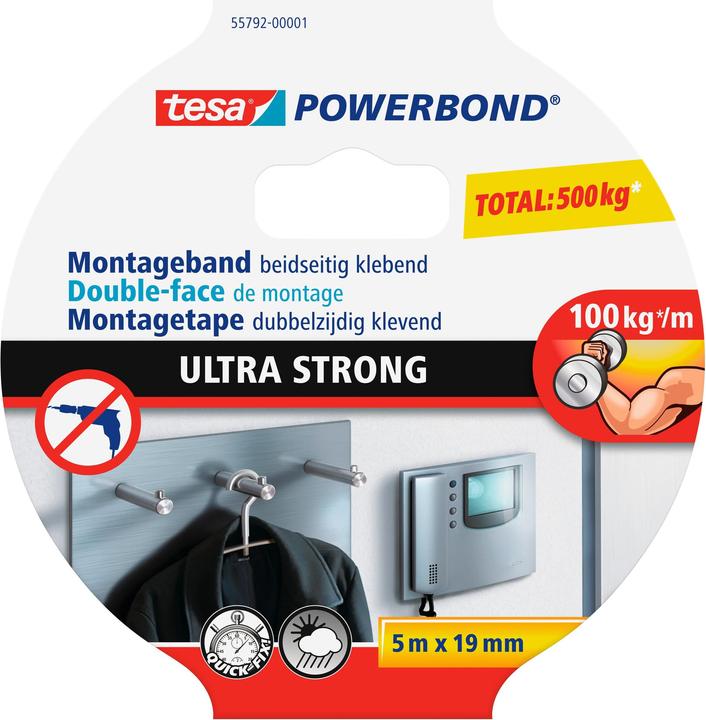
tesa Powerbond ULTRA STRONG double-sided mounting tape
19 mm

tesa Powerbond ULTRA STRONG double-sided mounting tape
19 mm
Can the adhesive tape be removed without leaving any residue? Please only answer if you know the answer. Thank you.
Yes, if any residue remains, you can easily remove it with petrol
With the right technology, YES! And unlike others, even after years. That's why it's the double-sided adhesive tape I use most often. (Only Tesa Powerstripes are even easier to remove when you get to the "open" end. But this is often not the case with larger objects. In addition, Powerstripes do not have a foam layer between the adhesive surfaces and are therefore less effective at levelling out unevenness).
The Powerbond ULTRA STRONG is constructed in such a way that it has a plasticised adhesive surface at the top and bottom, which is held together in the middle by a relatively thick layer of foam.
The best way to remove it (without leaving any residue) is to first separate the object at the foam surface and then stretch and peel off the two adhesive patches separately along the length. (The stretching causes them to lose their strong adhesive effect and this also prevents damage. I have even been able to remove wallpaper without damage. Same principle as with the Powerstripes. Powerstripes work better because they tear less quickly when you stretch them, as there is a continuous, very tear-resistant rubber/plastic layer on which the adhesive is firmly attached. With the Powerbond ULTRA STRONG, you have to pull really carefully and keep gripping it, otherwise it tears and you have to slowly start stretching the end again. )
Smaller objects can simply be loosened with a twisting motion, which "tears" the foam and the object comes away cleanly. Then simply remove the two layers of adhesive (carefully) by stretching as described.
In the case of larger adhesive surfaces, however, a great deal of force is required, up to and including impossible. Here you can either try using leverage (e.g. with a plastic chisel in between and thus increase the distance to the wall, which also tears the foam layer again). but this tends to cause more damage and is sometimes not possible.
What I usually do is "saw" through the foam layer: a narrow (about 2 mm diameter), stable cord, preferably with a "rough" surface, about 50 cm long and then attach a key ring to each end. Then insert it like a saw between the wall and the object and then move it back and forth like a saw, sawing through the foam part, so to speak.
With a little practice, this works surprisingly well. The only disadvantage: sometimes one side is no longer a continuous adhesive surface but has gaps/weak spots, which makes it a little more difficult to remove as it tears when stretched. But with a little more time, this also works.
By the way: under UV rays the whole thing becomes very hard, then it becomes more difficult to remove, it works, but is very time-consuming because it then crumbles when removed. But usually no direct sunlight gets on the adhesive surfaces, so this is more of a side case.